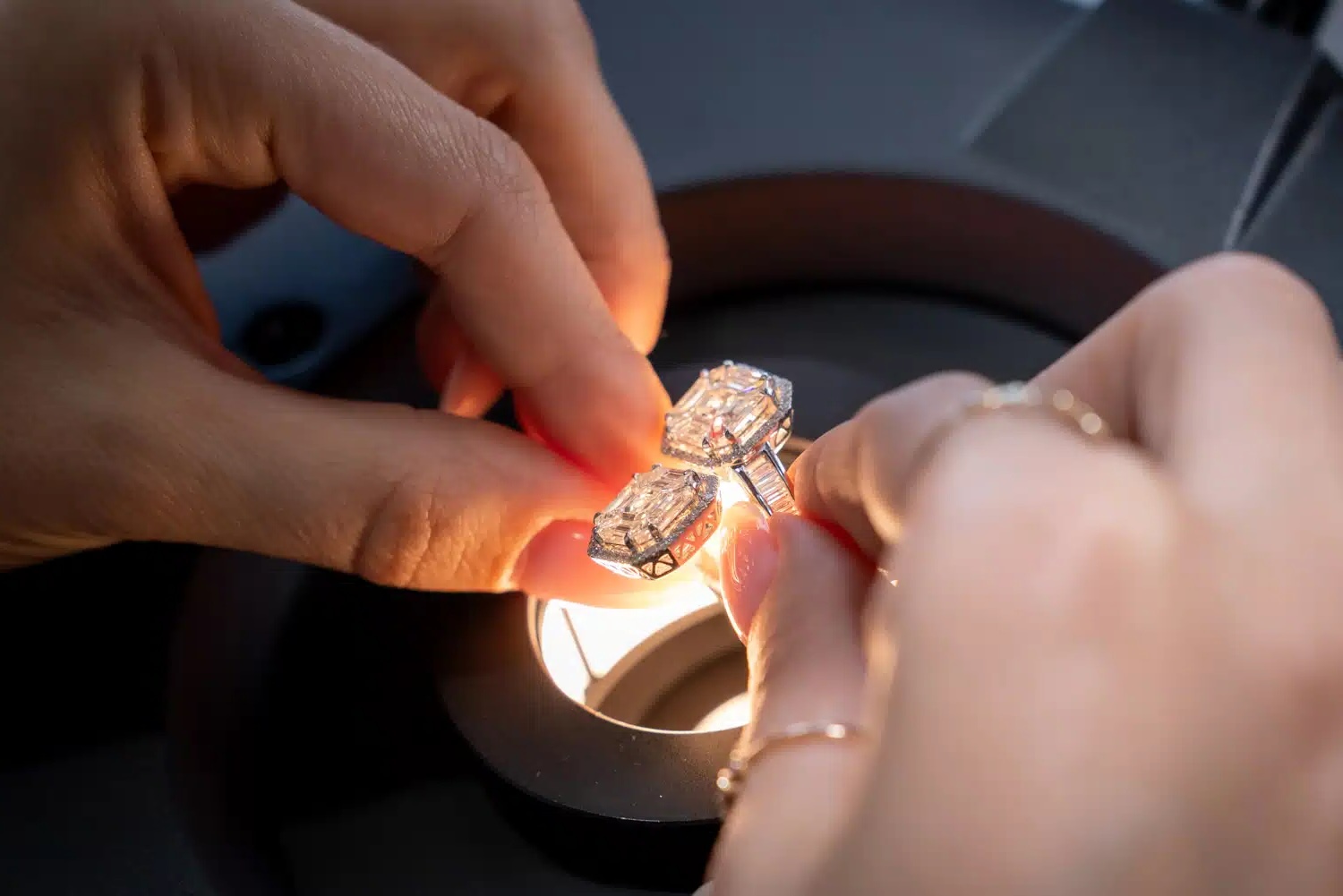
Are lab-grown diamonds real diamonds? Absolutely! Lab-grown diamonds are genuine diamonds, created using advanced technology that replicates the natural diamond formation process. These diamonds possess the same physical, chemical, and optical properties as mined diamonds.
Why choose lab-grown diamonds? They offer several benefits, including being more affordable and environmentally friendly. Since they are created in controlled settings, lab-grown diamonds have a smaller carbon footprint and avoid the ethical concerns associated with traditional diamond mining.
How are they made? Two primary methods exist: High Pressure High Temperature (HPHT) and Chemical Vapor Deposition (CVD). Both techniques produce high-quality diamonds that are virtually indistinguishable from their natural counterparts.
Are they valuable? Yes, lab-grown diamonds hold significant value, though they typically cost 20-40% less than mined diamonds. This makes them an attractive option for those seeking beauty and brilliance without breaking the bank.
What Are Lab-Grown Diamonds?
Lab-grown diamonds, also known as synthetic diamonds, are created in a controlled environment using advanced technology. They possess the same physical, chemical, and optical properties as natural diamonds.
- Lab-grown diamonds are made from carbon atoms arranged in a crystal structure, just like natural diamonds.
- These diamonds are created using two main methods: High Pressure High Temperature (HPHT) and Chemical Vapor Deposition (CVD).
- HPHT mimics the natural diamond formation process by applying high pressure and high temperature to carbon.
- CVD involves breaking down carbon-rich gases to form diamond layers on a substrate.
- Lab-grown diamonds can be produced in a matter of weeks, unlike natural diamonds which take billions of years to form.
Benefits of Lab-Grown Diamonds
Lab-grown diamonds offer several advantages over their natural counterparts. They are often more affordable and environmentally friendly.
- They are typically 20-40% cheaper than natural diamonds of similar quality.
- Producing lab-grown diamonds has a smaller environmental footprint compared to mining natural diamonds.
- These diamonds are free from the ethical concerns associated with conflict diamonds.
- Lab-grown diamonds can be produced in a variety of colors, including rare hues like blue and pink.
- They are often of higher purity and quality since they are created in a controlled environment.
Misconceptions About Lab-Grown Diamonds
Despite their growing popularity, there are several misconceptions about lab-grown diamonds. It's important to separate fact from fiction.
- Some people believe lab-grown diamonds are fake, but they are real diamonds with the same properties as natural ones.
- Lab-grown diamonds are not the same as diamond simulants like cubic zirconia or moissanite.
- They can be certified and graded by gemological institutes just like natural diamonds.
- Lab-grown diamonds are not indestructible; they can still be chipped or damaged if not handled properly.
- They do not lose their value faster than natural diamonds; both types depreciate similarly over time.
Lab-Grown Diamonds in the Market
The market for lab-grown diamonds has been expanding rapidly. They are becoming a popular choice for various types of jewelry.
- Major jewelry brands and retailers now offer lab-grown diamond options.
- The market for lab-grown diamonds is expected to grow by 22% annually over the next few years.
- Lab-grown diamonds are used in engagement rings, earrings, necklaces, and other fine jewelry.
- They are also used in industrial applications due to their hardness and thermal conductivity.
- Some consumers prefer lab-grown diamonds for their traceable origin and ethical production.
Scientific and Technological Aspects
The creation of lab-grown diamonds involves cutting-edge science and technology. Understanding these aspects can enhance appreciation for these gems.
- Scientists can control the size, shape, and quality of lab-grown diamonds during the production process.
- Advanced spectroscopy and imaging techniques are used to analyze and grade lab-grown diamonds.
- Researchers are continuously improving the methods to produce larger and higher-quality diamonds.
- Lab-grown diamonds can be engineered to have specific properties for industrial uses, such as enhanced thermal conductivity.
- Innovations in lab-grown diamond technology are contributing to advancements in electronics, optics, and quantum computing.
Future of Lab-Grown Diamonds
The future looks bright for lab-grown diamonds. They are poised to play a significant role in both the jewelry industry and various technological fields.
- As technology advances, the cost of producing lab-grown diamonds is expected to decrease further.
- Lab-grown diamonds could become the standard choice for consumers seeking ethical and sustainable jewelry options.
The Sparkle of Lab-Grown Diamonds
Lab-grown diamonds have truly changed the game. They offer the same brilliance and durability as mined diamonds but come with a smaller environmental footprint and often a lower price tag. These gems are created in controlled environments, ensuring high quality and ethical production. Plus, they’re available in a variety of shapes, sizes, and colors, making them perfect for any occasion.
From their eco-friendly nature to their cost-effectiveness, lab-grown diamonds provide a modern alternative to traditional gemstones. They’re not just a trend; they’re a smart choice for those who value both beauty and sustainability. So next time you’re in the market for some sparkle, consider lab-grown diamonds. They might just be the perfect fit for you.
Was this page helpful?
Our commitment to delivering trustworthy and engaging content is at the heart of what we do. Each fact on our site is contributed by real users like you, bringing a wealth of diverse insights and information. To ensure the highest standards of accuracy and reliability, our dedicated editors meticulously review each submission. This process guarantees that the facts we share are not only fascinating but also credible. Trust in our commitment to quality and authenticity as you explore and learn with us.
